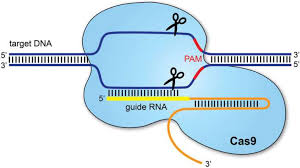CRISPR/Cas9 Knockout Adenovirus Vectors
Introduction to CRISPR/Cas9 Knockout Adenovirus Vectors
CRISPR/Cas9 premade products
Cat No. | Products Name | Type of Crispr | Viral vector | Promoter | Fluorescent/Resistance | Tag | Order
|
|---|---|---|---|---|---|---|---|
Ad-CMV-spCas9 |
spCas9 |
Adenovirus |
CMV |
zsgreen |
FLAG |
||
Adv-CMV-spCas9-zsgreen |
spCas9 |
Adenovirus |
CMV |
EGFP |
FLAG |
||
Adv-CMV-spCas9-EGFP |
spCas9 |
Adenovirus |
CMV |
Null |
FLAG |
||
Adv-CMV-spCas9-mcherry |
spCas9 |
Adenovirus |
CMV |
mcherry |
FLAG |
||
spCas9 |
lentivirus |
CMV |
puromycin |
FLAG |
|||
spCas9 |
lentivirus |
CMV |
zsgreen |
FLAG |
|||
spCas9 |
lentivirus |
CMV |
EGFP |
FLAG |
|||
spCas9 |
lentivirus |
CMV |
mcherry |
FLAG |
|||
spCas9 |
lentivirus |
CBH |
puromycin |
FLAG |
|||
spCas9 |
lentivirus |
CBH |
zsgreen |
FLAG |
CRISPR/Cas9 User Manual
Recombinant adenovirus (Adv), a replication-defective adenoviral vector system, is widely used for gene delivery in most cell types. The adenoviral vectors provided by Genemedi are based on human adenovirus type 5 (Ad5), which is replication-incompetent (-E1/-E3) and can’t be integrated into host genome, guaranteeing the security for subsequent operations. Adv packaging by Genemedi shows almost 100% gene delivery in most cell types in the recombinant protein expression system both in vivo and in vitro.
Derived from the type II CRISPR-Cas bacterial adaptive immune system, Cas9, an RNA-guided endonuclease, has emerged as a versatile genome-editing platform. Several microbial species possess this system, among which, Streptococcus pyogenes Cas9 (SpCas9), is the most robust and widely used Cas9 to date, primarily recognizes NGG PAMs and is consequently restricted to sites that contain this motif.
By combining Adv packaging system with Cas9 genome-editing platform, Genemedi has further developed Adv-Cas9 system to achieve gene knockout with high efficiency, which is one of the top advanced gene knockout technology in the world.
Properties
| Adenovirus-Cas9 | |
|---|---|
| Quantity/Unit | Vials |
| Form | Frozen form |
| Sipping and Storage Guidelines | Shipped by dry ice, stored at -80 ° C, effective for 1 year. Avoid repeatedly freezing and thawing |
| Titer | > 1*10^10 PFU/ml |
Advantages
1. Genome editing system of somatic tissues in postnatal animals.
2. Broad range of host. Adv has the ability to infect dividing, quiescent cells, stem cells, and primary cells, allowing genetic materials to be delivered to a highly diverse range of cell types and tissues.
3. High infection efficiency. As high as 100% gene delivery in most cell types, completely surpassing other viral vector tools and liposome transfection.
4. Without integration. No alteration to host genome.
5. High titer. Up to 1011 pfu/ml.
Applications and Figures

Quality control description
Technical Documents
1. For detailed protocol about how to package and purify Adv, please see the  Adenovirus User Manuall on the Genemedi website.
Adenovirus User Manuall on the Genemedi website.
2. For further information about how to design Adv-Cas9 system, please refer to the  CRISPR/Cas9 Knockout Adenovirus User Manual on the Genemedi website.
CRISPR/Cas9 Knockout Adenovirus User Manual on the Genemedi website.
Reference
1.Hu J, L Zhang, Y Yang, Y Guo, Y Fan, M Zhang, W Man, E Gao, W Hu, RJ Reiter, H Wang and D Sun. (2017). Melatonin alleviates postinfarction cardiac remodeling and dysfunction by inhibiting Mst1. J Pineal Res 62.
2.Xu C, F Wu, C Mao, X Wang, T Zheng, L Bu, X Mou, Y Zhou, G Yuan, S Wang and Y Xiao. (2016). Excess iodine promotes apoptosis of thyroid follicular epithelial cells by inducing autophagy suppression and is associated with Hashimoto thyroiditis disease. J Autoimmun 75:50-57.
3.Wang Y, X Zhao, X Wu, Y Dai, P Chen and L Xie. (2016). microRNA-182 Mediates Sirt1-Induced Diabetic Corneal Nerve Regeneration. Diabetes 65:2020-31.
4.Luo T, J Fu, A Xu, B Su, Y Ren, N Li, J Zhu, X Zhao, R Dai, J Cao, B Wang, W Qin, J Jiang, J Li, M Wu, G Feng, Y Chen and H Wang. (2016). PSMD10/gankyrin induces autophagy to promote tumor progression through cytoplasmic interaction with ATG7 and nuclear transactivation of ATG7 expression. Autophagy 12:1355-71.
5.Liu TY, XQ Xiong, XS Ren, MX Zhao, CX Shi, JJ Wang, YB Zhou, F Zhang, Y Han, XY Gao, Q Chen, YH Li, YM Kang and GQ Zhu. (2016). FNDC5 Alleviates Hepatosteatosis by Restoring AMPK/mTOR-Mediated Autophagy, Fatty Acid Oxidation, and Lipogenesis in Mice. Diabetes 65:3262-3275.
6.Liu H, S Fang, W Wang, Y Cheng, Y Zhang, H Liao, H Yao and J Chao. (2016). Macrophage-derived MCPIP1 mediates silica-induced pulmonary fibrosis via autophagy. Part Fibre Toxicol 13:55.
7.Yao T, X Ying, Y Zhao, A Yuan, Q He, H Tong, S Ding, J Liu, X Peng, E Gao, J Pu and B He. (2015). Vitamin D receptor activation protects against myocardial reperfusion injury through inhibition of apoptosis and modulation of autophagy. Antioxid Redox Signal 22:633-50.
8.Wang B, A Ma, L Zhang, WL Jin, Y Qian, G Xu, B Qiu, Z Yang, Y Liu, Q Xia and Y Liu. (2015). POH1 deubiquitylates and stabilizes E2F1 to promote tumour formation. Nat Commun 6:8704.
9.Hua F, K Li, JJ Yu, XX Lv, J Yan, XW Zhang, W Sun, H Lin, S Shang, F Wang, B Cui, R Mu, B Huang, JD Jiang and ZW Hu. (2015). TRB3 links




